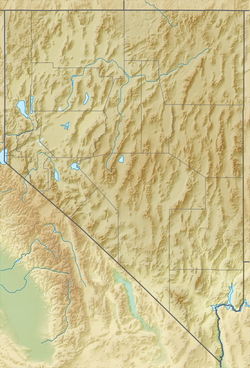| Hanson Creek Formation | |
|---|---|
| Stratigraphic range: Dapingian-Katian (Ibexian-Richmondian) | |
| Type | Geologic formation |
| Underlies | Roberts Mountains Formation |
| Overlies | Eureka Quartzite |
| Thickness | 350 feet (110 m) |
| Lithology | |
| Primary | Limestone |
| Other | Dolomite, sandstone |
| Location | |
| Coordinates | 39°00′N116°00′W / 39.0°N 116.0°W |
| Approximate paleocoordinates | 7°06′S74°30′W / 7.1°S 74.5°W |
| Region | Nevada |
| Country | United States |
| Type section | |
| Named for | Hanson Creek |
The Hanson Creek Formation is a geologic formation in Nevada. It preserves fossils dating back to the Dapingian-Katian (Ibexian-Richmondian in the regional stratigraphy) stages of the Ordovician period. [1]

